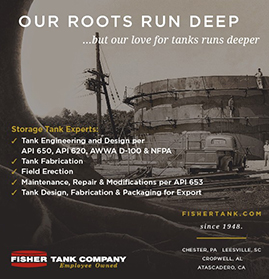With tools like ChatGPT taking the world by storm, everyone is braced for its massive impact on industry. But these predictions tend to be broad and vague, it’s much harder to be precise. How will the tank storage industry actually benefit from generative AI tools? Richard Stockley, Managing Director at RRC International, foresees one very specific use for ChatGPT: health and safety training and education.
2023 was the year of AI. But for all the positive noise about this new technology, there has also been scepticism and fatigue from the never-ending hype. Is it the greatest technological leap since the internet, or is it a bubble that won’t find its place for a few more years?
It’s very clear that ChatGPT and other text-based generative AI tools have a lot of potential. The difficulty is in imagining how to make the most of that potential. It isn’t a visual tool, and it still can’t be trusted with calculations, so how can it be applied in a very practical and precise industry like tank storage? What processes and systems can it actually impact? Where can it be trusted?
Tank storage is no stranger to progressive technologies. Naturally, there is already speculation that, combined with things like VR and AR, a ChatGPT-like tool could enhance simulations that improve tank storage efficiency and safety. This is because of ChatGPT’s ability to understand and respond to complex queries, pointing users in the right direction in a safe system where there is no danger that inaccuracies could cause an incident in real life.
But a much clearer area where generative AI’s ability to process and respond to human questions could have a direct impact on the tank storage industry is in occupational health and safety.
Health and safety e-learning has used machine learning – a lower level of AI – for years to help create learning pathways that are personalised to the user based on their performance and needs. It works in the same way that Duolingo serves up content based on how well a user is doing in interactive language learning modules, and gives basic pre-written feedback when the user makes predictable mistakes.
This kind of learning is cheap and efficient, but it has drawbacks. The feedback is formulaic, and it cannot answer questions, so it can’t beat the quality of the classroom where human teachers can respond to individual learners’ needs spontaneously, as and when needed.
ChatGPT and tools like it can bridge this gap between the efficiency of e-learning and the quality of classroom-based learning, by nudging e-learning from a monologue to a dialogue.
This is a really critical step up in terms of health and safety learning, making the transfer of information faster and more efficient, in turn leading to fewer incidents and accidents.
But there are two sides to this sword. Generative AI can help with the production of content, which in some contexts is useful. At the moment, though, the quality of the content it produces is questionable, and there is already a deluge of information out there making it hard for engineers in the tank storage industry to find reliable resources.
Likewise, as the cost of producing interactive e-learning courses gets cheaper, we will see companies create specific learning modules to fill identified gaps in your workforce’s knowledge. This is great, but with this lowering of barriers will inevitably come a huge number of poorly designed courses that aren’t really fit for purpose.
The aggregate impact, though, will be positive. ChatGPT-like AI tools will ultimately improve our ability to transfer information and learn on the job, making the tank storage industry safer and directly benefiting the industry in terms of reduced liability, a better culture, better staff engagement and retention, and a safer workforce.
At RRC, we’re optimistic about the utility of Generative AI in health and safety training and look forward to seeing how it will be used in a well thought out way.
For more information visit www.rrc.co.uk






















